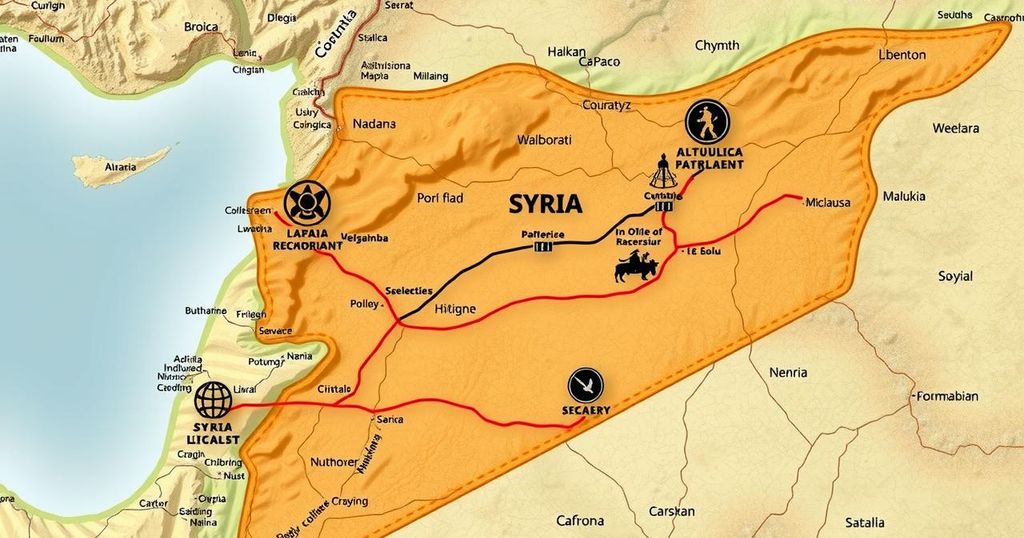Implications of the SDF Merger for U.S. Counterterrorism in Syria
The SDF’s agreement to merge with Syria’s new government represents a strategic development in unifying factions post-civil war. This shift may influence U.S. counterterrorism efforts and regional stability, particularly regarding the Islamic State threat. Experts express cautious optimism while recognizing significant challenges ahead for implementation and peace.
The Syrian Democratic Forces (SDF), a U.S.-backed coalition, has reached an agreement to merge with the interim government in Damascus, as reported earlier this week. This decisive agreement is intended to unify Syria’s diverse factions and marks a significant achievement for interim President Ahmed al-Sharaa amidst ongoing civil strife. Through this integration, the SDF will transfer control of critical sectors, including energy resources and military institutions, to the new state authorities.
This merger signifies a political advancement for Syrian Kurds, who have historically faced suppression from the Assad regime. With this development, there is potential for de-escalation of tensions with Turkey, which views the Kurdish-led SDF as a terrorist organization. The Turkish government has expressed approval of the deal, especially against a backdrop of increasing calls for disbandment from Kurdish factions affiliated with the SDF.
However, the nuances of this integration process and the ongoing issues in Syria will present challenges. The recent sectarian violence in western Syria highlights the obstacles that President al-Sharaa must confront in establishing peace. Retired General Joseph Votel expressed cautious optimism regarding the deal, suggesting it could support political progress for the SDF and advise patience during its implementation.
The merger involves substantial implications for U.S. counterterrorism operations in Syria. Votel described the Islamic State (IS) as a persistent threat, noting a recent increase in their activities in the region. Approximately 2,000 American troops remain in Syria to assist in curtailing the IS resurgence, and the recent agreement may influence future U.S. military strategies in the region.
Former President Trump has signaled interest in reducing U.S. involvement in international conflicts, prompting contemplation about troop withdrawal from Syria. While a Pentagon spokesperson has not confirmed withdrawal plans, concerns about IS regaining strength should a U.S. exit occur have been vocalized by various experts. Colin P. Clarke of the Soufan Group emphasized that withdrawal at this phase would manifest significant risks, especially given the SDF’s reliance on U.S. support to manage prisons housing IS fighters.
The SDF’s agreement to merge with Syria’s interim government signifies a critical pivot in the geopolitical landscape of the region, potentially stabilizing relations among various factions and easing tensions with Turkey. However, the merger necessitates careful monitoring regarding U.S. military presence and the ongoing threats posed by the Islamic State. The pathway forward will require strategic patience and vigilance from U.S. officials to maintain peace and deter potential terrorist activities.
Original Source: foreignpolicy.com




Post Comment